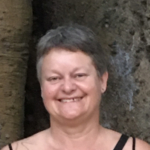When the rainbow flag was raised over City Hall on Jun 19 for the official proclamation of Pride Week, the declaration was provided in both French and English, the first time that the ceremony has been performed in both official languages.
“It had traditionally been done in English only,” says Stewart Green, deputy communications director for Mayor David Miller. “This year the mayor must have run into somebody from FrancoQueer, who suggested doing it in French. It was a personal request made to the mayor, which he acted on.”
Although there was a question about who would read the French version of the statement — Green describes the mayor’s French as “passable” — in the end Miller presented a hybrid version, beginning in English and ending in French.
Plus, “there’s a nice framed copy that will be displayed along with the English version,” adds Green.
Members of FrancoQueer, Toronto’s social and political group for queer francophones, are pleased with City Hall’s decision to go bilingual for the Pride event.
“This is the first time ever this has been done. We see it as a very good start,” says FrancoQueer board member Jean-Rock Boutin. “I’ve been attending the flag-raising for the last 10 years in Toronto and I always notice that many groups of people are recognized that make this city so great because of the diversity of culture, sexual orientation and different sexual practices.
“We can see in attendance many who assume different roles in the event. We can see the two-spirited people, which we call ‘berdache’ in French. As a founding nation it was a great thing they were honoured. Pride cochair or councillors or MPs or MPPs or the mayor would mention it in the proclamation but there was never mention of the French community, which is also a founding nation of this country as well as part of the multicultural community. The French community was totally absent at this official celebration of diversity.”
Boutin says the bilingual Pride declaration will help to show francophone homos they’re not alone.
“The French have a high level of assimilation [in Ontario] and, as both French and gay, we are invisible…. We need to have public events and a public presence. The queer youth who are French need role models and to be supported in coming out and need support in resisting bullying in school or with other problems.”

 Why you can trust Xtra
Why you can trust Xtra


